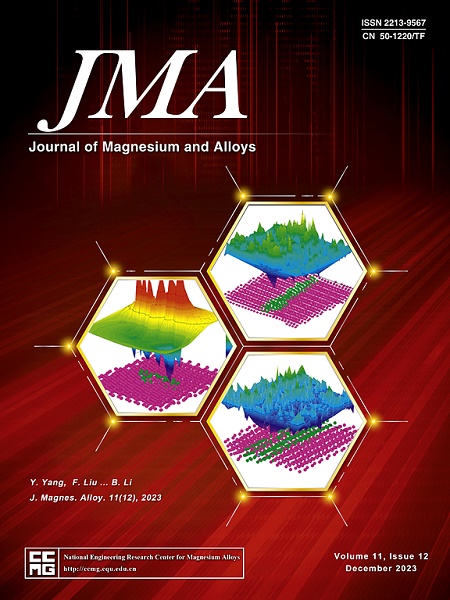Loading path and strain rate effects on the deformation behavior of [0001] textured nanocrystalline magnesium: An atomic-scale investigation
IF 15.8
1区 材料科学
Q1 METALLURGY & METALLURGICAL ENGINEERING
引用次数: 0
Abstract
Molecular dynamics (MD) simulation is employed to investigate the deformation behavior under various loading paths and strain rates of nanocrystalline magnesium (NC Mg) with [0001] texture. Atomic-scale structural evolution of NC Mg was performed under uniaxial and biaxial loadings. In tension process, compression twins and basal slip dominate, while the compression process is dominated by tension twins. The activation mechanism of twinning is highly sensitive to the loading path and grain orientation. Meanwhile, the effect of strain rate on the structural evolution of NC Mg was investigated. It is found that the effect of strain rate on the plastic deformation of NC Mg is reflected through the plasticity delays and the way to release the stress. As the strain rate decreases, the plastic deformation mechanism gradually changes from intragranular to grain boundary. Some significant potential deformation mechanisms in the loading process were studied. It is observed that {} twins nucleated inside the grains, and the thickening process is completed by basal 〈a〉 slip of the twin boundary. The strain compatibility between twins is automatically optimized with loading. Moreover, the detwinning mechanism caused by the interaction between twins and basal stacking faults is clarified.
加载路径和应变速率对 [0001] 纹理纳米晶镁变形行为的影响:原子尺度研究
本文章由计算机程序翻译,如有差异,请以英文原文为准。
求助全文
约1分钟内获得全文
求助全文
来源期刊

Journal of Magnesium and Alloys
Engineering-Mechanics of Materials
CiteScore
20.20
自引率
14.80%
发文量
52
审稿时长
59 days
期刊介绍:
The Journal of Magnesium and Alloys serves as a global platform for both theoretical and experimental studies in magnesium science and engineering. It welcomes submissions investigating various scientific and engineering factors impacting the metallurgy, processing, microstructure, properties, and applications of magnesium and alloys. The journal covers all aspects of magnesium and alloy research, including raw materials, alloy casting, extrusion and deformation, corrosion and surface treatment, joining and machining, simulation and modeling, microstructure evolution and mechanical properties, new alloy development, magnesium-based composites, bio-materials and energy materials, applications, and recycling.
 求助内容:
求助内容: 应助结果提醒方式:
应助结果提醒方式:


